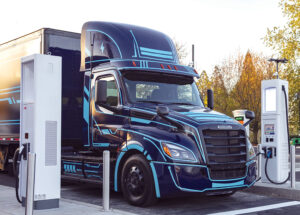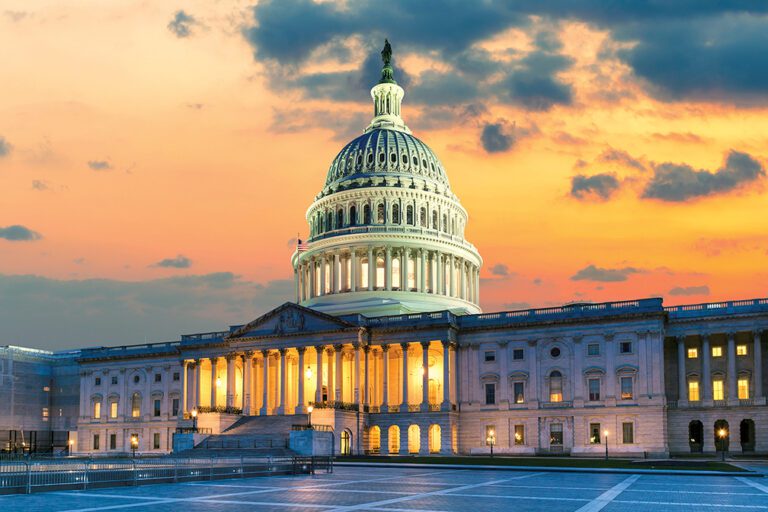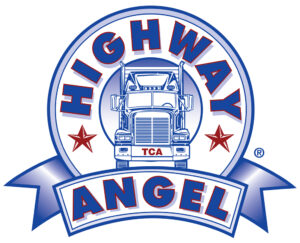In Washington — and across the nation — efforts to eliminate greenhouse emissions in the freight industry are ongoing as the departments of Energy, Transportation, Housing and Urban Development, and the Environmental Protection Agency work to implement a “blueprint” to decarbonization. In Congress, a new proposal dubbed the SHIP IT Act is being described as a sweeping overhaul to interstate trucking. Read on to find out about these issues, along with other news affecting the trucking industry.
Proposed SHIP IT Act focuses on improving trucking, supply chain logistics
A new proposal in Congress is designed as a “sweeping overhaul of the interstate trucking supply chain,” according to its sponsors. South Dakota Republican Dusty Johnson and California Democrat Jim Costa introduced the Safer Highways and Increased Performance for Interstate Trucking (SHIP IT) Act January 24.
Johnson says the act increases safety and shipping capacity for truckers, provides recruitment and retention incentives for drivers, and includes flexibility during times of emergencies or “black swan” events.
“Americans experienced a slew of freight disruptions during and after the COVID-19 pandemic,” he said. “Last year we addressed ocean shipping reform, and it’s clear that updates are needed for other parts of the supply chain. The SHIP IT Act will bridge gaps, keep costs down for consumers, and make it easier for shippers to move products across the U.S.”
Costa pointed to disruptions in the trucking supply chain, noting that these issues continue to drive up costs and create uncertainty for American consumers and producers.
“We need to recruit, train, and retain truck drivers to keep our supply chain moving, while also updating best practices to improve trucking to fit our modern economy,” Costa said. “That is why we introduced this bipartisan legislation to strengthen the workforce and make it easier to move products across the country.”
Trucking industry organizations, businesses and manufacturers voiced support for the proposal.
Sean Joyce, executive director of the Shippers Coalition, says his organization backs the legislation.
“(This is) vital to strengthening our supply chain by increasing shipping capacity, lessening burdens on truck drivers, modernizing the CDL process, and allowing additional flexibilities during times of emergency,” Joyce said. “The 80-plus members of the Shippers Coalition appreciate Congressman Johnson’s steadfast leadership on these issues and look forward to working with him to help this critical legislation become law.”
Matt Joy, president and CEO of heavy-duty truck parts manufacturer Hendricks, says making things easier on the trucking industry is vital to the nation’s economy.
“Any time we can make the recruitment of qualified truck drivers easier and with greater retention, that is a positive step for the supply chain,” Joy said. “Additionally, addressing the efficiency of moving goods on our roadways aligns well with America’s need to become more environmentally conscience, while keeping safety at the forefront. We are grateful to have Congressmen like Rep. Johnson, lead these significant and important issues.”
Michael Dykes, CEO of the International Dairy Foods Association (IDFA), describes the SHIP IT Act as “common-sense trucking reform.”
“(It) will help dairy companies overcome many of the current supply chain challenges facing our industry,” Dykes said. “The legislation would bring the U.S. supply chain into the 21st century to meet the needs of shippers, reduce regulatory burdens that cost shippers millions of dollars a year, create good paying jobs, and support the ambitious sustainability goals of dairy businesses. IDFA is grateful to Reps. Dusty Johnson and Jim Costa for their leadership on this issue, and we urge swift passage of the SHIP IT Act in both chambers of Congress.”
Tom Madrecki, vice president of supply chain and logistics for the Consumer Brands Association, believes the legislation will lead to fewer empty miles driven; a more robust, well-trained workforce; and a stronger national supply chain.
“The SHIP IT Act offers tangible solutions that stand to immediately address pressing supply chain challenges,” Madrecki said. “We call on Congress to pass this bipartisan legislation and take meaningful steps to lower consumer costs, enhance efficiency and support safety.”
The SHIP IT Act includes provisions designed to:
- Modernize the authority for certain vehicle waivers during emergencies, allowing waivers in response to disease and supply chain emergencies.
- Allow truck drivers to apply for Workforce Innovation and Opportunity Act grants.
- Incentivize new truck drivers to enter the workforce through targeted and temporary tax credits.
- Streamline the CDL process, making it easier for states and third parties to administer CDL tests.
- Expand access to truck parking and rest facilities for commercial drivers.
DOE provides $118 million in funding to accelerate biofuel production in US

The U.S. Department of Energy (DOE) in late January announced $118 million in funding for 17 projects to accelerate the production of sustainable biofuels for America’s transportation and manufacturing needs.
Made from widely available domestic feedstocks and advanced refining technologies, energy-dense biofuels provide a pathway for low-carbon fuels that can lower greenhouse gas emissions throughout the transportation sector and accelerate the bioeconomy, according to the DOE. Financing for novel biorefinery process systems can be a barrier to commercializing advanced biofuels, and this funding will reduce technological uncertainties and enable industry deployment.
“Biofuels are a versatile tool because they have the immediate potential to power our ships, trains, airlines and heavy-duty vehicles — a huge contributor to total carbon emissions — with a significantly reduced carbon footprint,” said U.S. Secretary of Energy Jennifer Granholm. “DOE investments are helping to build out a domestic bioenergy supply chain that increases America’s energy independence, creates jobs, and accelerates the adoption of cleaner fuels for our transportation needs.”
The selected projects, located at universities and private companies in nine states across the U.S., include pre-pilot, pilot, and demonstration projects. The DOE says the projects will scale-up existing biomass to fuel technologies that will eventually create millions of gallons low-carbon fuel each year. Plans submitted by the selected projects show intent to collaborate with local school districts to educate and train the bioenergy workforce of tomorrow.
Additionally, the funded projects align with renewable fuels goals in the first-ever U.S. National Blueprint for Transportation Decarbonization, a multi-agency framework for reducing emissions, creating a robust transportation workforce, and securing America’s energy independence. The projects also support the U.S. Sustainable Aviation Fuel Grand Challenge goal of enabling the production of three billion gallons of sustainable aviation fuel annually by 2030 and 35 billion gallons annually by 2050.
Award amounts range from $500,000 to $80 million, with most projects receiving at least $2 million. Funding will be administered by DOE’s Bioenergy Technologies Office.
CVSA receives $5 million grant to advance CMV enforcement training, support

In January, the Federal Motor Carrier Safety Administration (FMCSA) awarded the Commercial Vehicle Safety Alliance (CVSA) a $5 million Commercial Motor Vehicle (CMV) Enforcement Training and Support Grant/Cooperative Agreement to train and certify law enforcement individuals to conduct commercial motor vehicle safety activities such as inspections, investigations, audits, traffic enforcement, and other duties.
Through the funding and cooperative agreement, CVSA plans to develop and deliver motor carrier safety training to its state and local partners. Building on FMCSA’s current instructor pool and course and testing materials, CVSA will expand and deliver a comprehensive suite of certification and non-certification training courses, building on existing content and partnering with issue-specific industry leaders.
CVSA currently develops and maintains all non-regulatory elements of the roadside North American Standard Inspection Program and is responsible for developing training, tools, and equipment used in the roadside inspection process. In addition, CVSA is directly involved in the creation and production of training content already used by
FMCSA’s National Training Center.
According to a statement issued by CVSA, the organization “pursued this grant opportunity because we believe we possess the knowledge and ability to deliver high-quality training that will give jurisdictions assurance and confidence that their inspectors and enforcement personnel have the necessary training they need to effectively enforce the regulations consistently and uniformly — a mission and priority for the Alliance.”
Electrifying, charging the nation’s commercial fleets a daunting task

Full electrification of the U.S. vehicle fleet would require a large percentage of the country’s present electricity generation. Domestic long-haul trucking would use more than 10% of the electricity generated in the country today, while an all-electric U.S. vehicle fleet would use more than 40%. Some individual states would need to generate as much as 60% more electricity than is presently produced.
Those are a few of the findings from a report released by the American Transportation Research Institute (ATRI) in late 2022. The report, which assesses the infrastructure requirements for converting the U.S. vehicle fleet to battery electric, focuses on three critical challenges for nationwide vehicle electrification:
- U.S. electricity supply and demand;
- Electric vehicle production; and
- Truck charging requirements.
ATRI’s analysis also quantifies the tens of millions of tons of cobalt, graphite, lithium, and nickel that will be needed to replace the existing U.S. vehicle fleet with battery electric vehicles (BEVs), placing high demand on raw materials. Depending on the material, electrification of the U.S. vehicle fleet will require 6.3 to 34.9 years of current global production — the equivalent of 8.4% to 64.4% of global reserves for the U.S. vehicle fleet alone.
The report also shows that charging the nation’s long-haul truck fleet will prove challenging, partially due to the ongoing truck parking crisis. Current technology will necessitate more chargers than there are truck parking spaces in the U.S., with hardware and installation costs of $112,000 per unit. That’s more than $35 billion systemwide.
“Carbon-emissions reduction is clearly a top priority of the U.S. trucking industry, and feasible alternatives to internal combustion engines must be identified,” said Srikanth Padmanabhan, president of engine business for Cummins Inc.
“ATRI’s research demonstrates that vehicle electrification in the U.S. will be a daunting task that goes well beyond the trucking industry — utilities, truck parking facilities, and the vehicle production supply chain are critical to addressing the challenges identified in this research,” Padmanabhan continued. “Thus, the market will require a variety of decarbonization solutions and other powertrain technologies alongside battery electric.”
Beyond BEV automobiles, the report concludes that, while there are certain applications for BEV trucks, a completely new charging infrastructure is critical to increasing BEV truck adoption by the trucking industry. Furthermore, the research documents that existing raw material mining for BEV batteries will likely need to be re-sourced with an emphasis on domestic mining and production.
Only 24% of truckers want to go home every night, survey shows

Less than one-fourth of truck drivers want to run routes that have them home every night. That’s according to a survey of professional drivers conducted by Trucker Path.
The survey, which polled drivers who use the Trucker Path mapping and navigation app, asked, “How often do you prefer to return home?” Participants chose from the following options:
- Every night;
- Several times a week;
- Several times a month; or
- Always on the road.
The survey found only 24% of truck drivers wanted to be home every night. By far, the most popular option for drivers was to be home several times a month, with 36% stating that was their preference.
The second most popular option was to be home several times a week, chosen by 25% of truck drivers as their preference. The least popular option was to be always on the road, coming in at only 15%.
Further survey questions revealed that a majority of drivers have jobs that allow them to achieve their home time preferences. Eighty-nine percent of drivers who want to be home several times a week reported they are able to do so; 80% of drivers who prefer to be always on the road and 74% of drivers who want to be home several times a week achieve their goals. The lowest number was for drivers who preferred to return home every night, at 63%.
FHWA announces first round of Large Bridge Project Grants

The Federal Highway Administration (FHWA) has announced the first round of Large Bridge Project Grants from President Biden’s Bipartisan Infrastructure Law’s competitive Bridge Investment Program. The program is one piece of the administration’s largest dedicated investment in highway bridges since the construction of the interstate highway system, with nearly $40 billion over five years.
The first round of grants funds work on four bridges that connect communities in five states and are vital to commercial transport. According to the FHWA, improving these structures will address significant safety issues for drivers and delays in the movement of freight.
U.S. Transportation Secretary Pete Buttigieg said safe, modern bridges “ensure that first responders can get to calls more quickly, shipments reach businesses on time, and drivers can get to where they need to go. The Biden-Harris Administration is proud to award this historic funding to modernize large bridges that are not only pillars of our economy, but also iconic symbols of their states’ past and future.”
These initial projects include:
Brent Spence Bridge
The Kentucky Transportation Cabinet will receive $1.385 billion to rehabilitate and reconfigure the existing Brent Spence Bridge to improve interstate and local traffic flow between the interconnected Kentucky and Ohio communities on either side of the Ohio River. The current bridge is the second worst truck bottleneck in the nation and carries more than $400 billion in freight per year, according to the FHWA.
The project includes construction of a new companion bridge immediately west of the existing bridge to accommodate interstate through traffic on two bridge decks, and complete reconstruction of eight-mile interstate approach corridors both in Ohio and Kentucky, replacing 54 additional bridges. The project will separate Interstate 75 traffic from local traffic, making commutes quicker and improving freight passage along this critical corridor.
Golden Gate Bridge
The Golden Gate Bridge, Highway and Transportation District in California will receive $400 million to replace, retrofit and install critical structural elements on the Golden Gate Bridge to increase resiliency against earthquakes. The Golden Gate Bridge is vital to an estimated 37 million vehicles crossing the bridge per year, including 555,000 freight trucks, as well as waterborne commerce through the Golden Gate Strait connected to the Port of Oakland.
The improvements will ensure the structural integrity of a vital transportation link between San Francisco and Marin County. This bridge allows for the movement of people and freight along the California Coast and is a critical link for bicyclist and pedestrian traffic in the region.
Gold Star Memorial Bridge
The Connecticut Department of Transportation will receive $158 million to rehabilitate the northbound structure of the Gold Star Memorial Bridge, which is part of the Interstate 95 corridor over the Thames River between New London and Groton, Connecticut. The bridge carries five lanes of traffic and 42,600 vehicles per day and is a vital connection on the I-95 corridor for people and goods traveling between New York and New England. The rehabilitation will address structural repairs, increase load capacity and eliminate a load restriction for overweight vehicles. Additionally, the project will add a new multi-use path to foster bike-sharing and pedestrian access to transit services.
Chicago bridges
The City of Chicago, Illinois, will receive $144 million to rehabilitate four bridges over the Calumet River on the Southside of Chicago. The Calumet River connects Lake Michigan with the Lake Calumet Port District which is further connected to the Illinois River providing access to the Gulf of Mexico. Each bridge lifts an average of 5,000 times per year, providing continuous and safe access for marine traffic to and from the Port and surrounding industry.
Rehabilitating these bridges ensures that communities on either side of the river remain connected and the bridges continue to function to allow barge and ship traffic to traverse to the Illinois International Port and beyond. The project will eliminate a load restriction and truck detours. It will also add dedicated bike lanes and improved sidewalks to support community connections.
“These first Large Bridge grants will improve bridges that serve as vital connections for millions of Americans to jobs, education, health care and medical care and help move goods from our farms and factories,” said Deputy Transportation Secretary Polly Trottenberg. “And over the next four years we will be able to fund construction for the pipeline of shovel ready projects we are creating through Bridge Planning Grants.”
DOT rallies businesses, nonprofits, trade associations, others to help stem road deaths

Nearly 50 businesses and nonprofits — including trucking associations, state departments of transportation, law enforcement, and many others — are pledging millions of dollars in initiatives to stem a crisis in road fatalities under a new federal effort announced in early February.
It’s part of the Department of Transportation’s (DOT) “Call to Action” campaign, which urges commitments from the private sector, trade groups, and health and safety organizations to reduce serious traffic injuries and deaths.
Traffic fatalities are near historic highs after a surge of dangerous driving during the coronavirus pandemic.
The public-private effort, part of the DOT’s multiyear strategy that started last year to make roads safer, ranges from investments to improve school crosswalks to enhanced seat belt alerts in Uber vehicles and a partnership between the Centers for Disease Control and Prevention and the National Highway Traffic Safety Administration to promote proven injury prevention strategies, said Transportation Secretary Pete Buttigieg.
After a record spike in 2021, the number of U.S. traffic deaths dipped slightly during the first nine months of 2022, but pedestrian and cyclist deaths continued to rise. More than 40,000 people are killed in road crashes each year.
“It’s still a crisis,” Buttigieg said, stressing a need for a national change in mindset. “We’re looking at road deaths coming in year after year in a similar proportion to gun deaths. The problem is they’re so widespread and so common that I fear as a country we’ve gotten used to it and perhaps fallen into the mistaken sense they’re inevitable.
“We can’t solve any of this on our own,” he added. “We also know there isn’t one piece that will get this all down. But if we add all this together it can be enormous.”
The Truckload Carriers Association (TCA) is among the “first movers” — a group of about 50 organizations, companies and other entities — to take the pledge. TCA has committed to providing its members with a webinar about the benefits of safety improvement technology to help improve the safety performance of motor carriers across North America.
Road travelers will see an array of safety measures this year. Uber is donating $500,000 — its single biggest investment in its effort to reduce drunken driving — for free and discounted rides in Colorado, Georgia, Illinois, Missouri, and Texas as part of the “Decide to Ride” program that’s operated in tandem with MADD and Anheuser-Busch.
The world’s largest ride-share company also doubled the availability of its bike lane alerts from 71 cities to 144 for passengers exiting vehicles near cycling routes and providing a safety checklist for Uber Eats bicycle couriers. It also pledged to strengthen its seat belt alerts, such as by increasing their frequency or adding an audio message along with pop-up messages urging riders to “buckle up.”
“We were thinking about how we could make an impact more broadly — how we can get people to start making better choices,” said Kristin Smith, head of Uber’s road safety policy. “We know it’s going to take a broad coalition of people to be tackling the crisis on U.S. roadways right now.”
Uber’s investment comes along with separate commitments from Lyft, the second-largest rideshare company, which has partnered with the Governors Highway Safety Association in recent years to award tens of thousands of dollars in state grants to help reduce impaired driving and curtail speeding.
Other first movers include the Commercial Vehicle Safety Alliance, the Insurance Institute of Highway Safety, the American Trucking Associations, UPS, and more.
Devices Removed from FMCSA’s list of registered ELDs
The Federal Motor Carrier Safety Administration (FMCSA) has removed two electronic logging devices (ELDs) from its list of registered ELDs because of the manufacturers’ failure to meet the minimum requirements established in 49 CFR part 395, subpart B, appendix A.
Both the ELD ONE, made by TMS ONE, and the ORS ELD, made by ONE PLUS ELD, were placed on the “revoked” list by the FMCSA, the first effective January 31, 2022, and the second effective February 8, 2023.
FMCSA sent out industrywide emails to notify motor carriers that drivers using these ELDS should immediately discontinue use of the revoked devices and revert to paper logs or logging software to record their hours of service. ELD ONE devices must be replaced with compliant ELDs from the Registered Devices list before April 1, 2023; those using the ORS ELD have until April 10, 2023.
Until these dates, safety officials are encouraged to not cite drivers using the revoked devices for 395.8(a)(a), “no ELD,” or 395.22(a), “failed to use a registered ELD.” The drivers’ paper logs or logging software should be used to review hours-of-service data; the devices may be used as a back-up method for review.
This article originally appeared in the March/April 2023 edition of Truckload Authority, the official publication of the Truckload Carriers Association.
The Truckload Authority News Staff, comprised of award winning journalists and graphic artists, produces content for Truckload Authority, working in cooperation with the Truckload Carriers Association staff. Truckload Authority aims to keep TCA members abreast on the latest trends in the trucking industry as well as articles that feature TCA member executives and drivers. The Truckload Authority staff is based in Little Rock, Arkansas.








